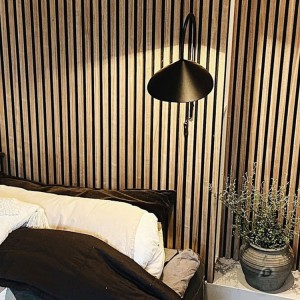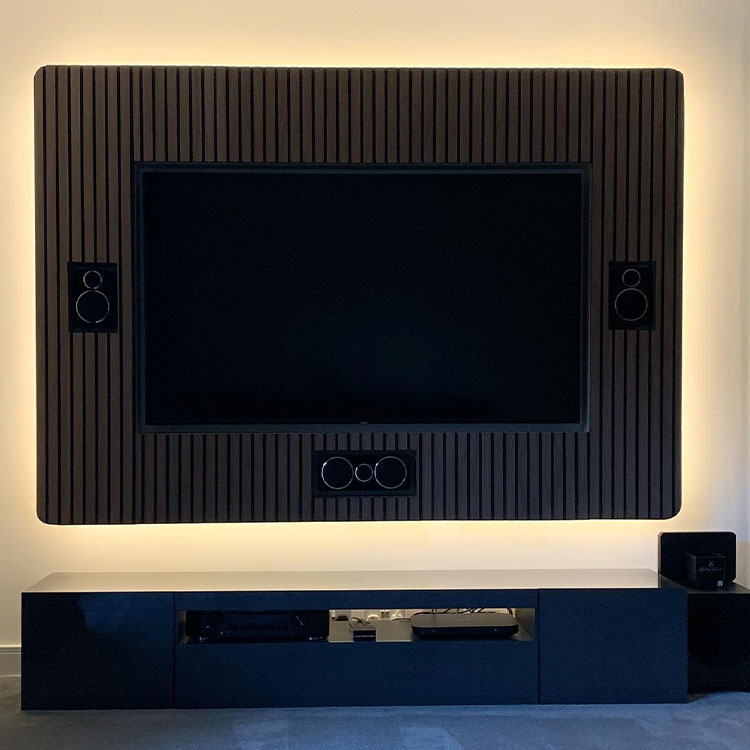I don't know when it started, formaldehyde and leukemia often appear in our sight, and they are not far from our lives. They may be in the same city, or they may be in the same community.
In the face of indoor formaldehyde exceeding the standard, everyone really showed their talents. Some have shown superb skills in this area, starting from planting flowers, such as pothos, spider plant, aloe... turning themselves into flower fairies. Some also firmly believe that modern people must master high technology, so negative ion equipment and formaldehyde adsorption equipment have been moved into the home, and a piece of furniture and a machine are standard equipment. And after a while, can these really be resolved? Needless to say, these measures are all palliatives, not the root cause.


But then I was attracted by a wave of information about zero-formaldehyde panels. What is a zero-formaldehyde panel? Is it really healthy?
Formaldehyde-free panels usually refer to panels without formaldehyde added during production and processing. We need to distinguish between zero formaldehyde addition and zero formaldehyde release. Because wood itself contains formaldehyde, it is impossible to achieve zero formaldehyde release.
Interlacing is like a mountain. In fact, a lot of fear comes from our ignorance of the facts. When we understand it thoroughly, we find that it is actually not as terrible as we imagined. The scary thing is that some merchants will exaggerate such "fear" emotions to confuse consumers.
Notice:
The existence of formaldehyde in the board mainly comes from the following two aspects:
1. It comes from the raw material itself. Wood contains a small amount of natural formaldehyde, but it is so small that it has no effect on the human body at all. The air we breathe, the beer we drink, etc. all have a certain amount of formaldehyde, and the wood itself Formaldehyde is completely negligible.
Second, it comes from the glue used in the board manufacturing process. Whether the wheelless is a rotary-cut veneer or a laminated wood, glue is needed for splicing and bonding to achieve the firmness of the board. However, 99% of the boards that appear in the market use urea-formaldehyde glue containing formaldehyde in the production process. Therefore, glue is the key to controlling the amount of formaldehyde released.
A finished board will have many hidden links, such as putty, veneer pasting concealer, if it contains formaldehyde, it will also affect the overall formaldehyde emission of the board.
Some import and export panels, because they need to be sold globally, directly refer to the most stringent standard - the formaldehyde emission is less than 0.3mg/L, and there is still a small amount of formaldehyde, so there is no real "zero formaldehyde" panel at all. .
Since there is no board with zero formaldehyde emission, do we worry that using boards for decoration will definitely damage our health?
no. To sum up, we can understand that the raw material of the board is wood, and wood contains trace formaldehyde, just like the trace formaldehyde contained in apples, beer, and the human body. Therefore, the finished board will more or less contain formaldehyde, but in fact a small amount of formaldehyde will not be harmful to the human body. It can be quickly metabolized into "formaldehyde" in the body and excreted through the respiratory and urinary systems. Therefore, you can still use panels for furniture decoration with confidence, but you need to choose carefully when purchasing panels, and pay attention to whether the quality of the panels and the amount of formaldehyde released meet the national standards.
So how do we choose the board? What are the national standards?
In the domestic panel market, there are E0, E1, and E2 that express the amount of formaldehyde emission. On December 10, 2001, the General Administration of Quality Supervision, Inspection and Quarantine of the People’s Republic of China issued the "Limits of Formaldehyde Release in Wood-based Panels and Their Products for Interior Decoration Materials"
(GB18580——2001), marked with national standard E2 ≤ 5.0mg/L, national standard E1 ≤ 1.5mg/L two limited levels, it is stipulated that products with national standard E1 can be directly used indoors, and products with national standard E2 must be decorated It can be used indoors only after treatment. In 2004, in the national standard "Plywood" (GB/T9846.1-9846.8-2004), the limit level of E0≤0.5mg/L was also marked. The national standard E0 level is the limit of formaldehyde release in my country's wood-based panels and their products. the highest standard.
But this statement may change in the future. Starting from May 1 this year, as the only mandatory standard in the industry, GB18580-2017 "Limits of Formaldehyde Release in Wood-based Panels and Their Products for Interior Decoration Materials" came into effect. In the new version of the standard, the limit requirements for formaldehyde release are increased, the limit value of formaldehyde release is stipulated as 0.124 mg/m3, the limit mark is "E1", and the "E2" level of the original standard is cancelled; and the formaldehyde detection test method is unified as "1m3 climate chamber Law".
This standard is the basis for testing whether the formaldehyde emission of products is qualified, which means that the formaldehyde emission of all wooden products must meet the requirements of this standard.
If an enterprise produces products that are stricter than the new standard "E1" (≤0.124 mg/m3) and meet the requirements of GB/T 35601-2017 "Green Product Evaluation of Wood-based Panels and Wooden Floors", they can choose to implement the national standard GB /T 35601-2017. GB/T 35601-2017 will be implemented on July 1, 2018. Its formaldehyde limit index value is less than or equal to 0.05 mg/m3, and the detection method is the same as GB 18580-2017. At that time, the highest standard representing the limit of formaldehyde emission from domestic panels will become even higher.
To sum up, the "E2" mark will gradually withdraw from the market. When consumers purchase building materials, if the merchant claims that "E2" is a qualified product, they should be vigilant and do not buy products that do not meet the national standards. Consumers are advised to buy boards that have reached the E0 level. If they buy products that have just reached the standard (E1 level), after the decoration is completed, it is recommended to open the windows for a period of ventilation before moving in, preferably more than three months.
Dongguan MUMU Woodworking Co., Ltd. is a Chinese sound-absorbing building material manufacturer and supplier. Please contact us for more information!
Post time: Jun-16-2023







